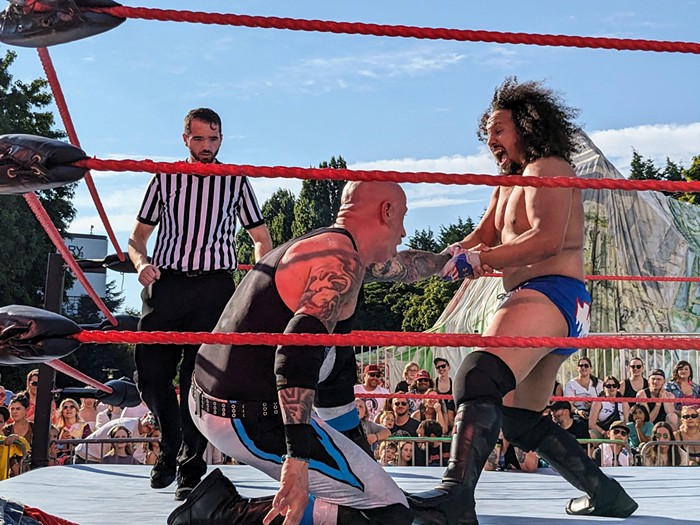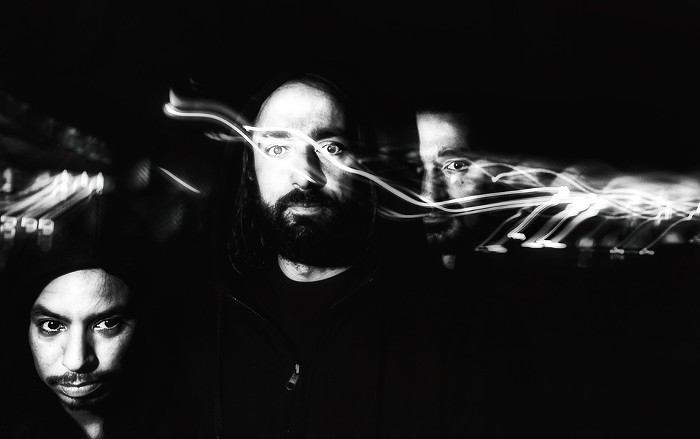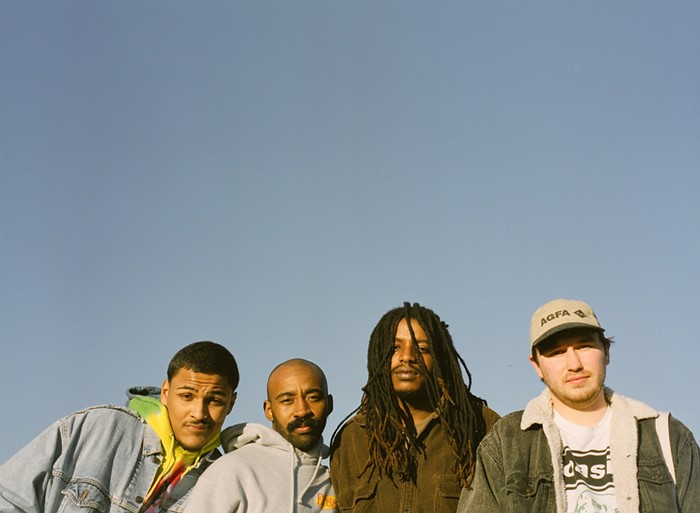This concert is once-in-a-lifetime fairy-tale stuff, man. Kronos Quartet, based in San Francisco since 1978, is the best, most adventurous, most famous string quartet in the world. They play old music with new energy, and they've also supported an entire generation of composers by commissioning 750-plus pieces. They've collaborated with poets and painters and jazz players, gypsy musicians and opera singers and yodelers, baroquers and Bollywooders. They have a rule: They never play the same program twice. To show for themselves, they have approximately one trillion recordings, the respect of the entire universe, and things like Grammys.
Few people realize that their first concert was not in San Francisco, but in Seattle. It took place in November of 1973, exactly 40 years ago. This weekend, they come back to celebrate, while, of course, making something entirely unprecedented happen: Their performance on Saturday culminates with a dance/vocal/quartet/video production cocreated with Seattle's Degenerate Art Ensemble, led by dancer Haruko Nishimura and composer Joshua Kohl.
"David [Harrington, Kronos founder/violinist] said when he watched our video, that if he had known us in 1973, we would be doing a show together in 1973," Kohl says, and at that point, Kohl could die happy.
"They've been my heroes since I was a kid," he says. He'd tried to get Harrington's attention for years, "sending messages through all the channels I could find." Finally, Kronos members tuned in to a webcast of Kohl conducting a piece by Seattle composer (and Stranger Genius Award finalist) Jherek Bischoff at Lincoln Center, and during their Seattle stand at the Neptune last year, Kohl got an e-mail from Harrington, which was followed by a breakfast at Sound View Cafe at Pike Place Market— "an instant nerdfest," Kohl describes. "I pitched him a draft of this piece."
Kohl was at PCC shopping for groceries when Harrington called to deliver an hour-and-a-half critique. He suggested new areas of research, and structural and conceptual changes. Kohl was thrilled: "I mean, I can't imagine another person I'd rather have a critique from."
The final piece is about 20 minutes long. It's called Warrior, and it's a chapter in an ongoing DAE series called Predator's Songstress.
The first chapter premiered last year in a dark loading dock behind the formal stages of Seattle Center. It was based on Gracie Hansen, controversial creator of the "Sin Alley" burlesque revue that became the popular underbelly of the 1962 fair. (A few years later, she ran for governor of Oregon, declaring, "I've had my eye on [Governor] Tom McCall's seat for a long time," coming in third in the Democratic primary.) That first chapter was a collaboration with Olson Kundig Architects, and the entire project is supported by Nishimura's Guggenheim Foundation fellowship. DAE hopes to finish Predator's Songstress in the next two years: On their website, there's a photograph of a fierce-looking Nishimura facing down a bonfire of burning books under the title "next anti-heroine creation in-progress: The Dictator." Watch out.
In the Kronos collaboration, Warrior, the "anti-heroine" is Joan of Arc. She's reimagined as an indigenous woman fighting riot police, trying to take back the land for her people. She's danced by Nishimura, with music by Kohl and Kronos, and with a "stark, ceremonial" set, "like a séance, with chalk and candles" and video and lighting installations by Seattle artists Lilienthal|Zamora. Six costumed singers with microphones stand at the edges of the chalk lines on the floor, each wearing a strapped-on speaker that projects their live voices as well as prerecorded sounds.
The concert is produced by Seattle Theatre Group, better known for bringing Broadway shows and hit acts to the Paramount.
"Because of the Broadway stuff, it may not be as apparent how adventurous they are," Kohl says. STG, he remembers, is the reason Bischoff got his first orchestral commission. It was 2005, and STG was willing to take a chance on producing DAE to commission local composers. STG has hosted DAE on its season four times since then. (Kronos premiered a piece of Bischoff's at Lincoln Center in July, and may play one this weekend at the Neptune.) "STG are some of the most amazing, open-minded producers to work with," Kohl says.
DAE and Kronos have been writing back and forth and rehearsing on their own, but together, they get just one rehearsal—the night before the performance. Nishimura's dancing space is only 10 by 20 feet, "and the piece is very athletic, very intense," Kohl says. "She doesn't want to take out a Stradivarius or anything."
How did the creative process work at such a distance? For instance, what did Harrington say during that grocery-store critique?
"What he told me was, 'I think the ending you wrote for this piece is so beautiful, but I think you should throw it away,'" Kohl says. "'I think it needs to be beautiful and as innovative as the rest of the piece.'"
Harrington gave Kohl an image to guide him, as an idea. The image was when a child lets a helium balloon go, and it floats off and up into the air. That image, translated into music, is the new ending. ![]()



















